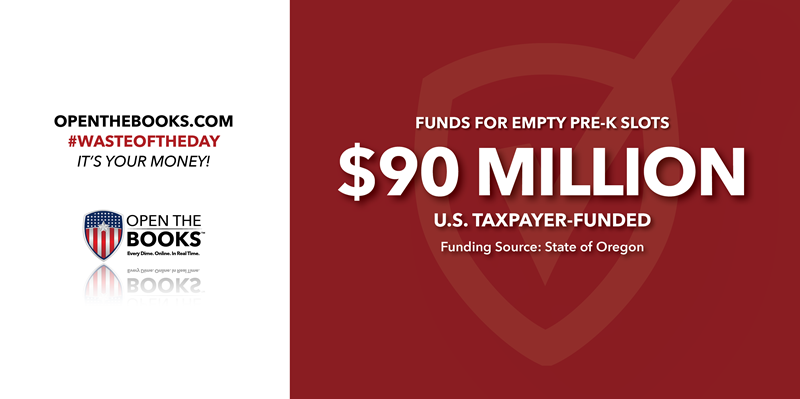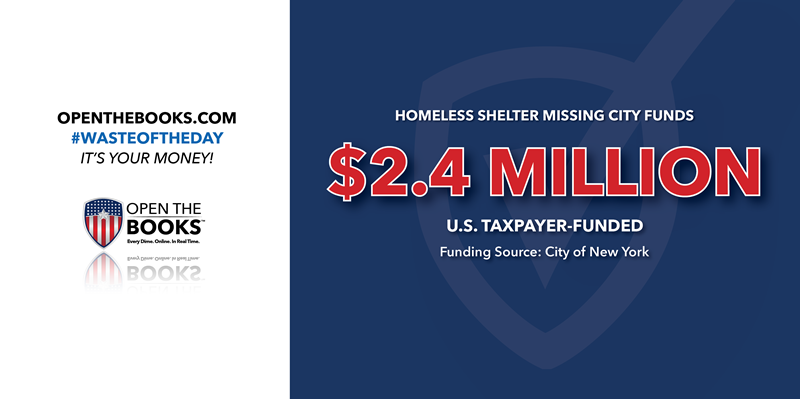
Biden’s 99 Executive Orders Cost $1.5 Trillion
October 10, 2022

In less than two years since taking office, President Joe Biden has issued 99 executive orders, greatly outpacing both the Trump and Obama administrations in the same time period — at a cost to taxpayers of nearly $1.5 trillion.
Donald Trump issued 220 executive orders throughout his four-year presidency, while Barack Obama issued 276 over his eight years in the Oval Office, Fox News reported.
Most Biden’s orders came his first year, when he issued more than any president since the 1970s.
The budgetary impact analyses included with each order are vaguely worded and only show if the order will have no impact, increase or decrease federal costs, which makes it difficult to assign a specific dollar cost to each, Fox News noted.
But a recent Penn Wharton Budget Model shows the recent student loan forgiveness executive order alone could cost up to $1 trillion, up from the original estimated cost of $500 billion.
The Heritage Foundation's Matthew Dickerson told Fox News that according to the nonpartisan Congressional Budget Office, Biden’s earlier orders already cost taxpayers $500 billion.
“So, it could be up to $1.5 trillion in cost to taxpayers just on executive actions, not legislation going through Congress and being signed into law and being debated,” he said. “All of this new spending that the executive branch is doing, that Biden is doing, is by fiat.”
These executive orders could impact inflation.
More printed money flooding the economy, financed by the Federal Reserve, fuels inflation, Dickerson noted. The U.S. Army recently suggested that soldiers take advantage of the Supplemental Nutrition Assistance Program — food stamps.
Biden’s executive orders have expanded "the welfare state" and paid "people to stay out of the workforce," Dickerson said. "So that's only exacerbating the 3.3 million worker shortage that we see in the economy.”
California Car Credit May Cost $900M Annually
October 11, 2022

There are over 14 million automobile registrations in California. Californians love — and are dependent on — their cars.
A new initiative passed by the state legislature and on its way for Gov. Gavin Newsom’s signature, is a radical strategy aimed at changing the car culture: rewarding low-income residents who live car-free.
SB 457 looks to pump the brakes on the romance, according to the Washington Post, and pay $1,000 to each household member that doesn’t have a vehicle registered.
Based on estimates of residents who qualify to participate, staff for the bill’s author, state Sen. Anthony J. Portantino (D-Burbank), claim it will keep 900,000 cars off the road, and cost state taxpayers $900 million a year.
It is just one of nearly 40 bills Newsom will sign into law as part of the California Climate Commitment, a $54 billion plan to fight climate change that exceeds what most countries are spending. It aims to advance economic opportunity and environmental justice in communities across the state.
While the bill pays low-income earners to not own vehicles, it also pays those who currently don’t own vehicles, calling into question how many net cars will be removed from the streets. Also, participants in the program will “self-certify” as to the number of people in their households without cars.
The program allows a credit for taxable years beginning on or after Jan. 1, 2023, against the “net tax,” according to a press release from Portantino.
It’s a refundable tax credit for people getting the Earned Income Tax Credit and nonrefundable credits for households making less than $60,000 per year.
In a statement from his office, Newsom said, “Together with the Legislature, California is taking the most aggressive action on climate our nation has ever seen. Adding, “That’s climate action done the California Way – and we’re not only doubling down, but we’re also just getting started.”
Oregon Spends $90M on Practically Empty Pre-K
October 12, 2022

The Oregon Department of Education’s Preschool Promise Program has given nearly $90 million in grants to early learning facilities. Many of these facilities are under enrolled, including some with fewer than 10 students, one with a single student, and another with no students.
Oregon’s Preschool Promise program was launched in 2016 to provide publicly-funded preschool for 3-4 year-olds for families at or below 200 percent of the federal poverty level, or $53,000 for a family of four. It assigns "slots" to 268 select childcare providers — each one representing one student and being worth approximately $14,000 per year. By comparison in-state tuition and fees to attend the University of Oregon is $14,420.
The program has suffered from well-below expected enrollment, but still spent the money: $90 million for school years through February 2021 and February 2022.
The overspending in under-enrolled schools has more than a few examples, according to Fox News.
One such school, Village Childcare was paid $600,000 for 33 preschool slots in 2020-2021, and 20 preschoolers in 2021-2022. But the center reported fewer than ten students enrolled in the program during that time, Fox News reported.
All Families Welcome was paid to fill 18 slots in 2020-2021, but had no students enrolled. In 2021-2022, just one student was enrolled. Yet the center was paid over half a million dollars — $300,000 one year, and more than $220,000 the next year, Fox News reported.
Neighborhood House was awarded 36 slots both years, but had fewer than 10 students enrolled. They were awarded $448,000 in the 2020-2021 school year, and $370,000 in the 2021-2022 school year.
All awarded facilities were paid for expected, not actual, enrollment. Why no cutback to match attendees?
An Oregon Department of Education spokesperson told Fox News that the Preschool Promise funding is mostly for fixed costs, including staffing, utilities and facilities.
Centers “require that programs be ready to serve eligible families as soon as they are referred, which means programs must be prepared at all times to serve the full number of funded slots,” the spokesperson said.
In the midst of these lower-than-expected numbers, the Early Learning Division said it’s “examining protocols to review enrollment and direct programs to reduce operations until enrollment increases.”
Throwback Thursday: Expensive Consumer Credit Research Tainted With Bias
October 13, 2022

Throwback Thursday!
The National Science Foundation’s program called Research Applied to National Needs spent $397,000 in 1976 — more than $2 million in 2022 dollars — for a scientific and unbiased study but awarded the contract to a biased party, earning it the Golden Fleece Award for July that year.
Sen. William Proxmire, a Democrat from Wisconsin, gave awards to wasteful and nonsensical spending, eventually handing out 168 Golden Fleece Awards between 1975 and 1988.
The National Science Foundation awarded the contract “to perform an unbiased and scientific study of consumer legislation and services to a principal investigator and research center which have an overwhelming bias in favor of the credit industry,” Proxmire said at the time.
“This is like asking the Air Force to study the need for the B-1 bomber or the oil and gas industry to evaluate the depletion allowance,” Proxmire said.
The contract was awarded to Dr. Robert W. Johnson, executive director of the Credit Research Center at Purdue University, but it shouldn’t have been given to them, the senator argued.
He noted that the Credit Research Center at Purdue University is partially funded by the credit industry, and of the advisory council’s 37 members, 33 are affiliated with the credit industry.
Of the nine people on the center’s governing board, four are credit industry executives, Proxmire said. And Johnson himself was a principal witness against the Truth In lending legislation when it was before the Senate. The act protects consumers against inaccurate and unfair credit billing and credit card practices.
Johnson has also received support from the credit industry, Proxmire alleged, to give it research and other materials that were used in testimony against other consumer legislation that’s now law.
“The conflict is so blatant that there is no way the research can be accepted as unbiased whatever its results,” Proxmire charged.
A NYC-Funded Homeless Shelter Wasted $2.4M
October 14, 2022

A non-profit that runs a New York City-funded homeless shelter couldn’t say how it spent almost $2.4 million in funding over three years.
The organization, the Institute for Community Living, received the funds from the city’s Department of Homeless Services, which “did not complete required expenditure reviews,” according to an audit from New York State Comptroller Thomas P. DiNapoli.
The report also found that the non-profit may have wasted more than 155,000 meals worth nearly half a million dollars from 2016 to 2019.
“Our audit found a shelter charged expenses to the city with little or no explanation and unconscionably and regularly threw mountains of food into the trash,” DiNapoli told the New York Daily News. “New York City has a homelessness crisis and must demand more accountability from shelter providers, who are paid millions of dollars.”
The Institute for Community Living was in contract with the city Department of Homeless Services since 2014 through December 2021 to provide shelter and medical care to mentally ill and drug-addicted women at the Tillary Street Women’s Shelter, the Daily News reported.
DiNapoli focused on the period of 2016 to 2019, finding that the nonprofit claimed $24.5 million in reimbursable expenses from the city but that $1.2 million in personal service costs weren’t eligible to be reimbursed and that $1.1 million “in indirect and other expenses were also ineligible,” the Daily News reported.
While conducting the audit, DiNapoli asked the organization for employee time records, something the non-profit couldn’t provide. The audit also had few records for other expenses the organization claimed to have, including more than $71,000 in utility expenses, $61,000 in insurance costs, and nearly $52,000 in facility repairs, the Daily News reported.
The #WasteOfTheDay is presented by the forensic auditors at OpenTheBooks.com.